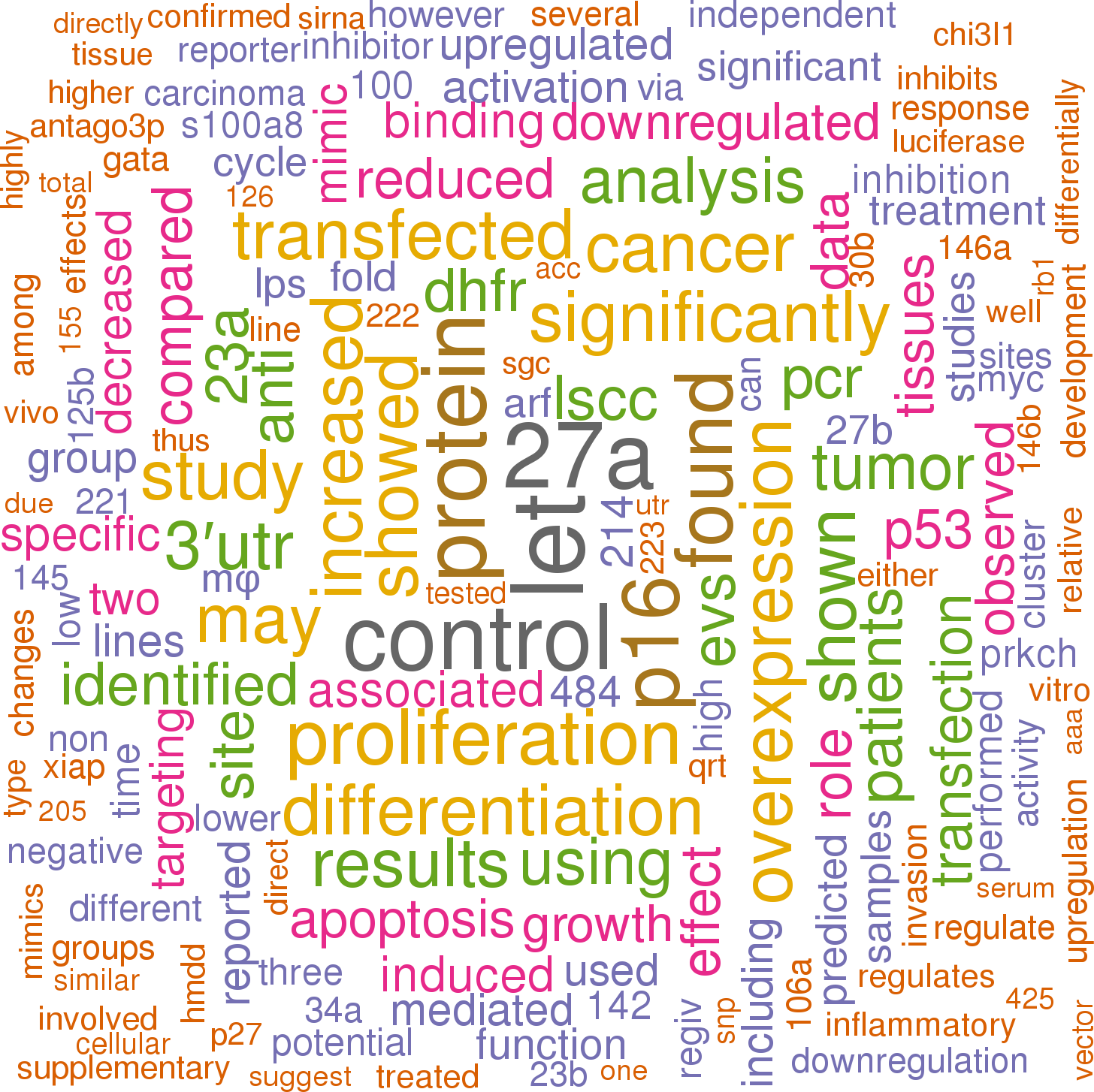Accession
MI0000080
Symbol
HGNC:
MIR24-1
Description
Homo sapiens
hsa-mir-24-1 precursor miRNA mir-24
Gene
family?
family?
RF00178;
mir-24
Summary
Caution, this is an AI generated summary based on literature. This may have errors. ?
MIR24-1, a microRNA, is implicated in various biological processes and diseases, with its recognition sequence identified in the 3′UTR of the human SLITRK1 gene [PMC4215120]. This sequence shares a 91% nucleotide identity with its porcine counterpart [PMC4215120]. MIR24-1 is associated with conditions such as familial breast cancer and cervical cancer and is conserved across species, clustering with miR-23 and miR-27 on human chromosomes 9 and 19 [PMC4215120]. Overexpression of MIR24-1 enhances H3K27ac levels at numerous enhancers, suggesting a regulatory role in gene expression [PMC8954937]. In the context of long-term potentiation (LTP), MIR24-1 appears to be downregulated to permit the expression of certain genes [PMC3393663]'>PMC3393663], although its precise role in LTP consolidation remains to be fully elucidated [PMC3393663]. Target prediction algorithms have identified numerous potential mRNA targets for MIR24-1, indicating its broad regulatory potential [PMC3393663]. Moreover, CRISPR technology has been employed to create knockout mice for MIR24-1 to study its functions further [PMC8684555], while changes in its expression have been observed in various cellular contexts without direct external modulation [PMC7378464].
Literature search

347 open access papers mention hsa-mir-24-1
(2066 sentences)
(2066 sentences)
Sequence
804290
reads,
2095
reads per million, 159 experiments
cuccggUGCCUACUGAGCUGAUAUCAGUucucauuuuacacacUGGCUCAGUUCAGCAGGAACAGgag
((((.((.(((.(((((((((..(((((.............))))).))))))))).))).)).))))
((((.((.(((.(((((((((..(((((.............))))).))))))))).))).)).))))
Structure
g G A UA ucuca
cucc gU CCU CUGAGCUGA UCAGU u
|||| || ||| ||||||||| ||||| u
gagG CA GGA GACUUGACU GGUca u
A A C -C cacau
Annotation confidence
High
Do you think this miRNA is real?
Genome context
chr9: 95086021-95086088 [+]
Clustered miRNAs
3 other miRNAs are < 10 kb from hsa-mir-24-1
| Name | Accession | Chromosome | Start | End | Strand | Confidence |
|---|
Disease association
hsa-mir-24-1 is associated with one or more human diseases in the Human microRNA Disease Database
| Disease | Description | Category | PubMed ID |
|---|
Biological pathways
hsa-mir-24-1 is involved in one or more biological pathways:
(Source: Reactome)
(Source: Reactome)
Biological reactions
hsa-mir-24-1 is involved in one or more regulation/signalling events:
(Source: Reactome)
(Source: Reactome)
Mature hsa-miR-24-1-5p
| Accession | MIMAT0000079 |
| Description | Homo sapiens hsa-miR-24-1-5p mature miRNA |
| Sequence | 7 - UGCCUACUGAGCUGAUAUCAGU - 28 |
| Evidence |
experimental
cloned [7] |
| Database links |



|
| Predicted targets |



|
Mature hsa-miR-24-3p
| Accession | MIMAT0000080 |
| Description | Homo sapiens hsa-miR-24-3p mature miRNA |
| Sequence | 44 - UGGCUCAGUUCAGCAGGAACAG - 65 |
| Evidence |
experimental
cloned [1,4-7], Northern [1], Illumina [8] |
| Database links |



|
| Predicted targets |



|
References
|




